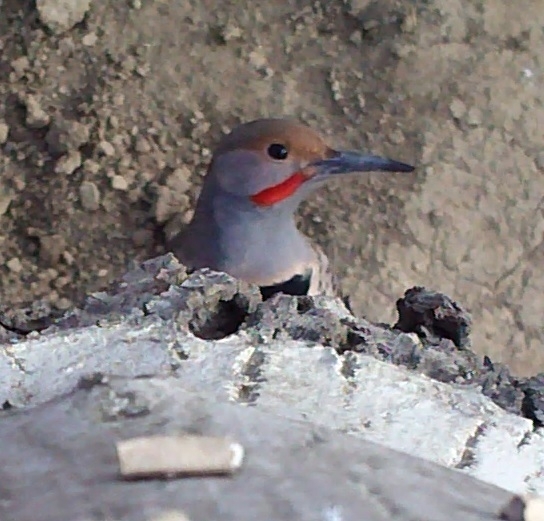Across the globe, scientists have shown that birds can be farmer allies. Insectivorous birds feed on damaging insect pests in many crops including coffee, cacao, oil palm, corn, cabbage and apples. Raptors, including hawks and barn owls, feed on rodents, including gophers, voles and mice (see blog, Barn owls help clean up rodents naturally).
Despite this deep historic knowledge that birds are important predators of crop pests, over time the perception of birds as natural enemies of pests has been generally replaced with the idea that birds are often major crop pests themselves. Indeed, some bird species — like some types of insects — can cause trouble for farmers, but many others — especially those that eat insects and rodents — can be beneficial.
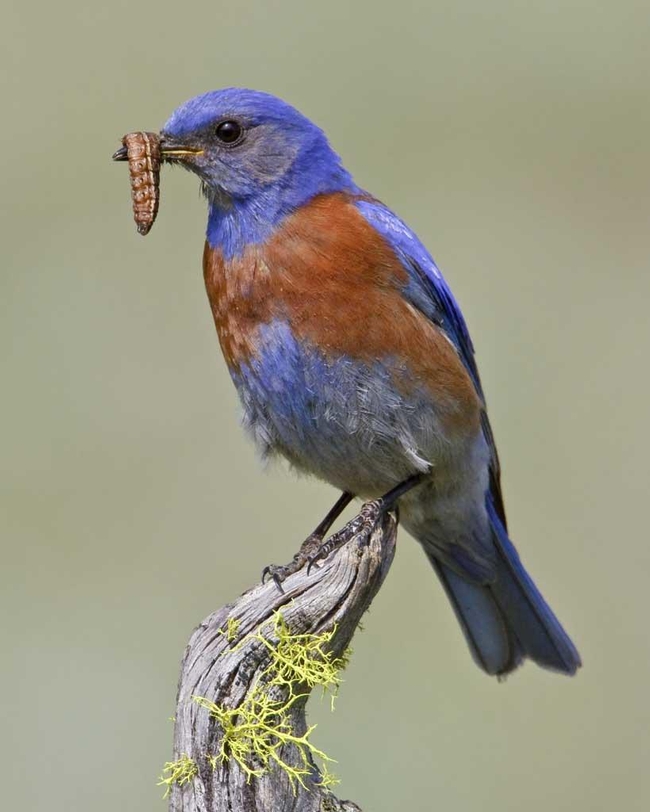
Do birds control insect pests on farms in California's Central Valley?
They do! Recent studies by Dr. Sacha Heath, UC Davis, and Rachael Long, field crops and pest management advisor, UC Cooperative Extension, showed that birds help control insect pests in walnut orchards. Dr. Sara Kross (UC Davis postdoctoral alumnus, now with Columbia University) showed that birds help control alfalfa insect pests.
Birds are voracious predators of codling moth pests in walnuts
Codling moth is a major worm-like pest that infests walnuts, apples and pears. The larvae go dormant during winter, living in cocoons in crevices in trees. Adult moths emerge in the spring, lay eggs and infest crops.
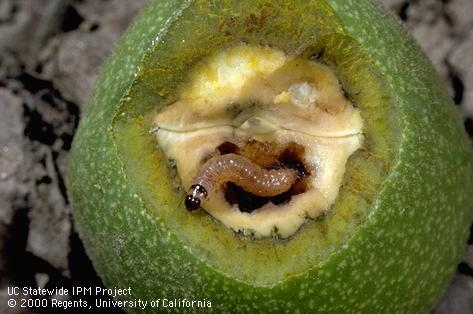
We evaluated bird predation of codling moth using “sentinel prey” and exclosure cages. We glued codling moth cocoons to walnut trunks and covered them with cages, allowing insects and spiders to access the cocoons, but not bird predators. This allowed us to count how many larvae were eaten inside and outside of the cages to estimate pest reduction by birds.
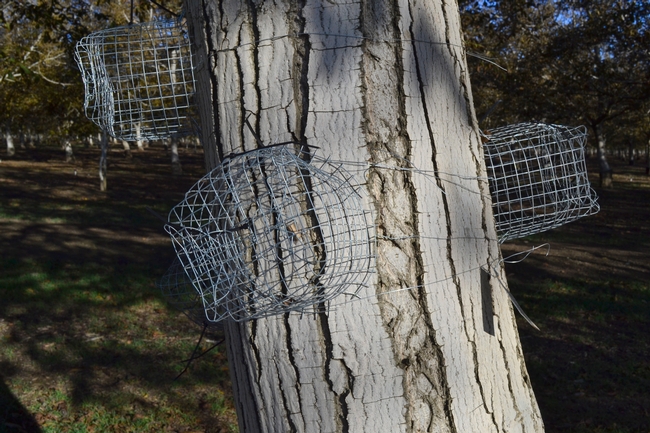
What did we find?
Natural enemies, like parasitic wasps and lacewings, alone reduced codling moth larval numbers by 11%; adding birds into the pest control system reduced them by 46%! Nuttall's woodpeckers and white-breasted nuthatches did a lot of the work; these birds travel up and down the trunks of trees, searching for insects.
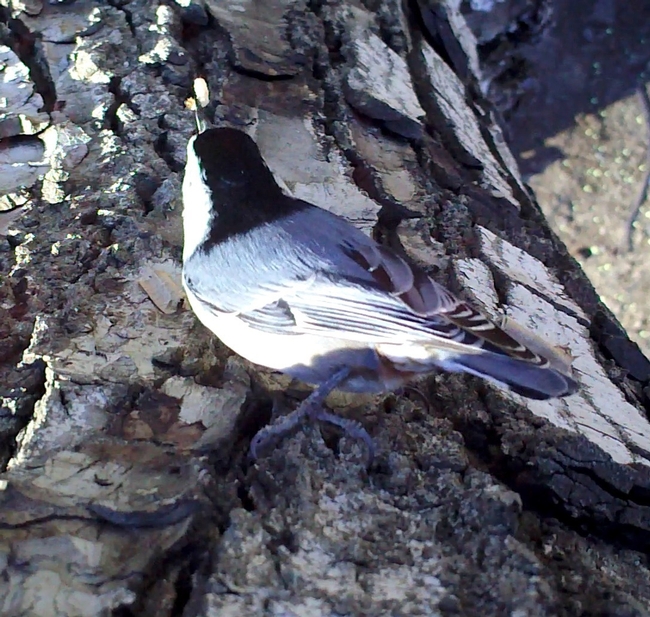
Alfalfa weevils are no match for insectivorous birds
Alfalfa weevils are key pests of alfalfa, reducing yields and hay quality if left uncontrolled. Dr. Sara Kross looked at bird predation of this pest by excluding birds from alfalfa plants via cages, and counting the number of weevils inside and outside the cages. She found that birds reduced the number of weevils by more than 30%, showing their importance in helping to protect alfalfa from this serious pest.
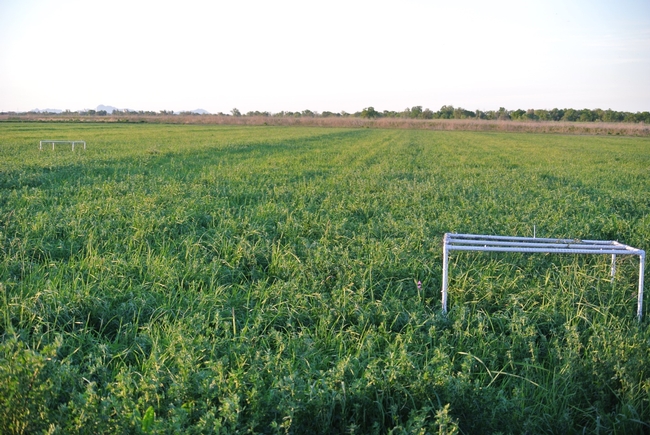
Does field edge habitat, like hedgerows, help attract beneficial birds?
Yes! Hedgerows are important habitat for beneficial birds, serving as nesting, foraging and roosting sites. In a study in the Sacramento Valley, crop margins with hedgerows, tree lines and riparian buffers harbored up to six times more birds and up to three times more bird species than bare or weedy margins.
Walnut orchards adjacent to hedgerows and riparian areas had higher numbers of beneficial birds along with more species. In alfalfa, there were more beneficial birds in fields when at least two tall trees were present along the field edges. More beneficial birds were associated with better pest control, that is, fewer codling moth cocoons and alfalfa weevils.
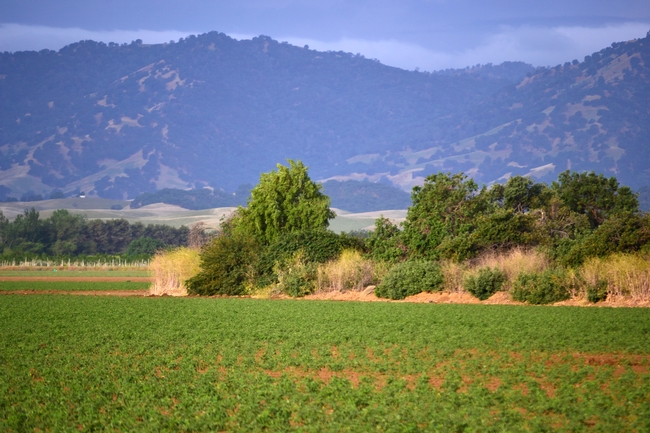
Birds have large territories, fly long distances, and are influenced by what happens on the farm as well as by what happens in the landscape around the farm. For example, we found that codling moth predation by birds greatly increased in walnut orchards as the amount of habitat in the landscape around the orchards increased (including hedgerows, tree lines, riparian and oak woodlands, and grasslands).
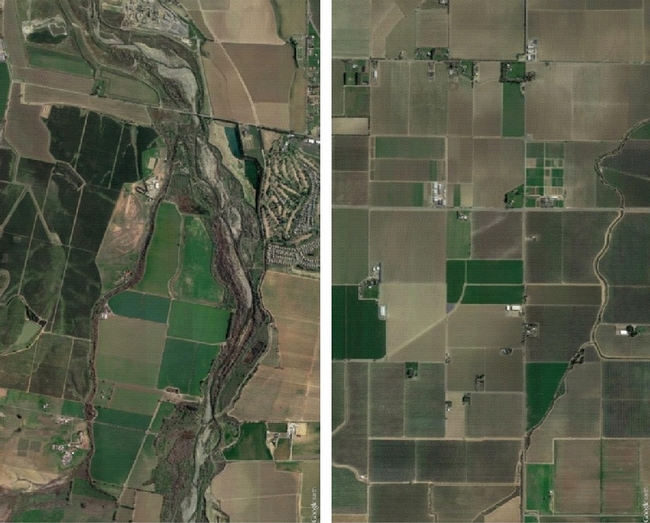
Will hedgerows increase the numbers of pest birds?
Pest birds are present on farms regardless of field edge habitat (such as weedy vegetation or hedgerows). Cases will be different, depending on the crop, but in the fields and orchards of Yolo County, researcher Hillary White (formerly with UCCE and now with U.S. Fish and Wildlife) found that three of the most common avian crop pests (American crow, red-winged blackbird and Brewer's blackbird), were up to 10 times more abundant in agricultural fields with bare or weedy margins than in fields with hedgerows.
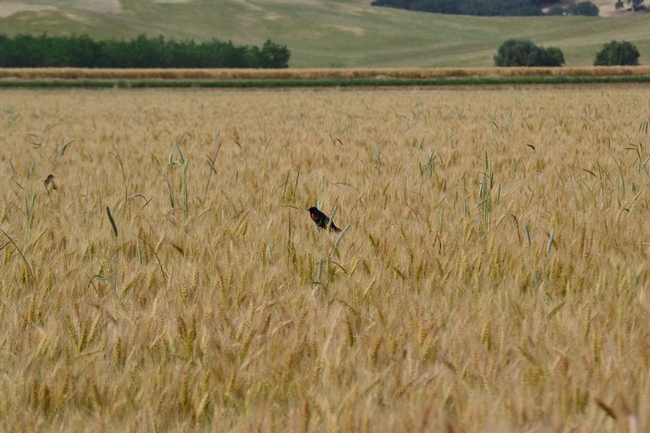
What can I do to attract beneficial birds to my farm?
Our avian research team has been quantifying the conditions under which birds are helpful or harmful to growers. We are looking for ways to help farmers create bird habitat on their farms to harness the beneficial pest control services birds can provide, while also protecting crops from the damaging effects of some bird species. This information is available in the new publication “Supporting Beneficial Birds and Managing Pest Birds,” co-authored by the Wild Farm Alliance and Drs. Kross and Heath, and technically advised by UC Cooperative Extension and several farmers. This is a user-friendly guide for farmers and conservation practitioners, with the goal of co-managing farmlands for biodiversity and farming.
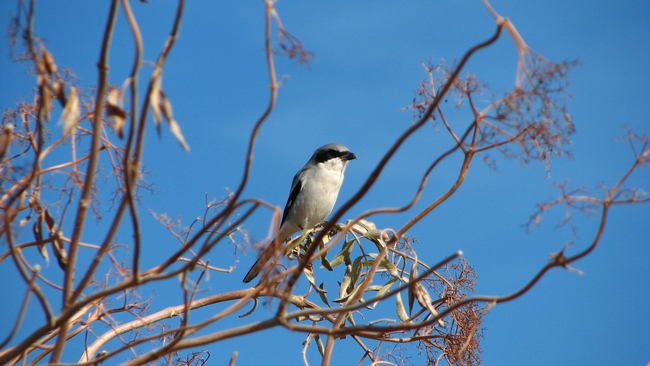
Dr. Sacha Heath received her PhD from UC Davis's Graduate Group in Ecology and will soon be starting a postdoctoral fellowship with the Living Earth Collaborative in St. Louis, Missouri.
